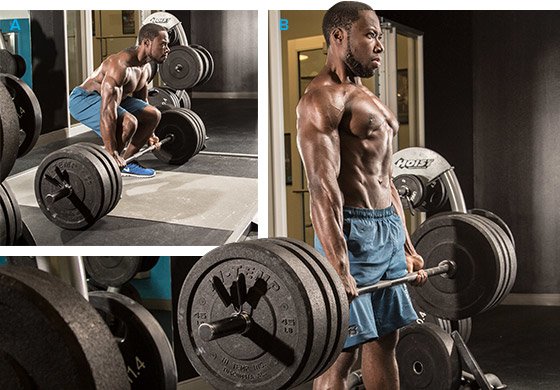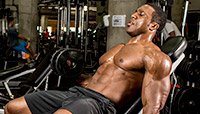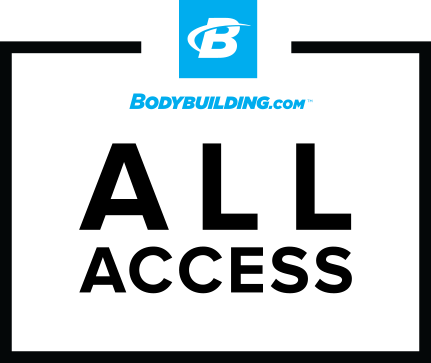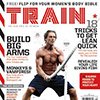Aside from the misguided questions regarding supplements and "secrets" for muscle growth, one of the things new lifters frequently ask me is what training program they should use to build muscle. Even when muscle magazines were the only source of information, there were already a dizzying number of systems to pick from. Now that the internet has made everyone into a supposed guru, there are too many options for anyone to keep track of!
You've got the tried-and-true bodybuilding programs like German volume training and high-intensity training, as well as plenty of strength-centric routines like 5x5, but there are also hundreds, if not thousands, of branded and copyrighted routines whose authors claim they are the best ways to train.
Fortunately, you don't need to worry about picking the "perfect" system because, quite simply, it doesn't exist. Just about any program will work if you apply enough effort, especially if you're still a beginner lifter. In fact, if you've got one guy busting ass on a ridiculous routine with 100 percent effort and another guy half-assing the smartest, most well-designed program in existence, I'll put my money on the hard worker every time.
That being said, there are definitely a few elements of proper program design you should look for. Smart training is great, hard work is even better, and a combination of the two will bring you the fastest results possible. Whether you're designing your own routine or starting off with a premade program, the following are a few things you need to consider before you begin.
1. Understand That There Is No "Perfect" Routine
First of all, anyone claiming that his or her system is the only way to train is probably full of crap. There are certainly basic principles you should follow, but far too many lifters get caught up in one system or one way of thinking about training, and they don't try anything different or new for years—even if they're not making progress. If you want to pick the right routine now and in the future, drop the dogma and keep an open mind about training. Even the classic basics won't work forever, and you'll eventually need to change things up to make continual gains.

2. Set Long-Term Training Goals
Any program worth its salt will fit your long-term goals. You may want to increase your bench by a certain amount in 12 weeks or lose a pound of fat each week until you reach your desired body composition, but those are extremely short-term goals. Training is a lifelong endeavor, and building a great physique and significant strength will take years.
Sure, you can make great leaps in development in a short amount of time, but you should not have to hop from one program to the next every few months. So, pick a program—or better yet, a set of training principles—that will keep you moving forward, even as you occasionally shift focus from muscle gain to fat loss.
3. Stick To The Basics
Fancy exercises have their place in a routine, especially once you've reached an advanced level of development and need different movements to keep progressing. For any beginner or intermediate lifter, however, basic movements like squats, presses, and pulls, as well as all their variations with barbells and dumbbells, should be the foundation of a good program. Machines and cables can work well too, but even then, you're generally better off using machines that simply mimic a barbell exercise in a fixed plane of motion. If you look at the way most world-class bodybuilders and power lifters train, even they rarely deviate from tried-and-tested exercises.

Deadlift
4. Add Weight, Bro
Here's one element that far too many muscle mag programs lack: progression. You can do endless sets and reps of every exercise imaginable, but your progress will come to a halt if you're not adding weight to the bar. And, while this might seem obvious to lifters who haven't spent too much time on the internet and message boards, the myth still prevails that you don't need to get stronger to build muscle.
Still, adding weight to the bar isn't the only way to progress, and you're not going to be able to go heavier and heavier all the time. Other forms of progression include extra reps, extra sets, extra sessions, and even shorter rest periods. Heavier weights should always be your end goal, but you'll still be moving in the right direction if you can track tangible progress from one session to the next.
5. Have Realistic Goals
I'm all about lofty goals, and I think most guys can gain an incredible amount of muscle and strength if they put forth a full effort, but you've got to be realistic about what you can accomplish in a given timeframe. If you're genetically average and have already experienced your "newbie gains," chances are you're not going to build pounds of muscle per week or double your strength in a year or less. Set your long-term goals sky high if you want, but break them up into short-term goals that you can realistically accomplish in a few months.

Also, forget the concept of simultaneous fat loss and muscle gain—at least until you've built the vast majority of the mass you want to gain. If you're too fat for your liking, cut weight until you're comfortable with how lean you are. Once you're lean enough, steadily gain quality weight for a year or more at a time. Waffling between cutting and bulking will leave you looking the same year after year.
6. Listen to Your Body
You probably understand how important proper nutrition and rest are for recovery, but even with the right foods and plenty of sleep, you can still end up fatigued. To ensure adequate rest and constant growth, you also need to address recovery within your plan.
You don't necessarily need to set week-long deloads or take a week or more off from the gym. You never really know how strong you're going to be until you get in the gym, and long, rigidly planned periods of "taking it easy" may just cost you productive training time.
Instead, your program should allow you to make adjustments on the fly. Some days you'll feel like crap but still hit personal bests, and other days you're just not going to be able to perform at your highest. On those days, you need to be able to switch up your weights, rep schemes, and overall training volume to ensure you're fresh and completely ready to go for the next session.

Should I Gut Out A Workout When I Feel Awful?
Your muscles can handle multiple assaults each week, as long as you're smart about the plan of attack. Give yourself both the stimulus to grow and space to heal with autoregulatory training!

